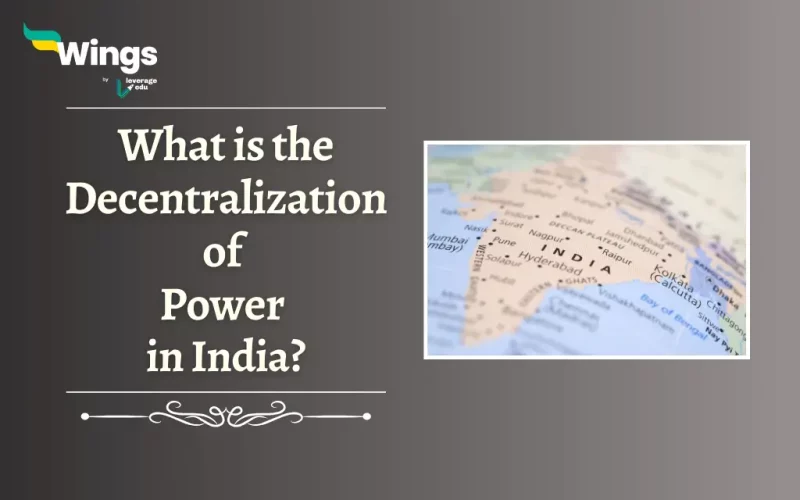The meaning of Decentralisation of Power is that the centre or State has handed over its powers to the locals. India, being a vast nation cannot work on a two-tier government. India’s decentralisation efforts, like the Panchayati Raj system, have empowered local communities by bringing decision-making closer to the people. Furthermore, this has led to increased accountability, better resource allocation, and development solutions tailored to local needs. Decentralisation of Power in India allows local communities to have a greater say in how they are governed, hence guaranteeing their specific needs and priorities are addressed.
Also Read: What is State Autonomy in India?
Table of Contents [show]
What is the Decentralisation of Power?
The States of India, in terms of population, are itself a nation. For instance, the population of Uttar Pradesh is equivalent to Russia’s population. Moreover, going through the problems of different states, cities, and districts was impossible, which is why there was a need for the Decentralisation of powers. Thus, the meaning of the Decentralisation of Power is that the powers of the state and centre are taken and given to the local government for them to function on its levels.
Also Read: Devolution of Powers and Finances up to Local Levels
Types of Decentralisation of Power in India
Furthermore, there are numerous Types of Decentralisation which may include political, administrative, etc.
- Political Decentralisation: It puts the power of decision-making closer to the people.
- Citizens and their elected officials have a bigger role in shaping local policies.
- This allows for more participation and ensures decisions better reflect the needs of diverse communities within a large country.
- Administrative Decentralisation: Administrative decentralisation, loosens the central government’s grip by delegating authority, responsibility, and financial resources for public services.
- Hence, this empowers lower levels of government to better serve their communities.
- Fiscal Decentralisation: This approach grants regional governments more control over their finances.
- They have greater flexibility in managing revenue and spending, but they are still held accountable for financial responsibility.
- Market Decentralisation: It shifts certain public services away from the government and towards non-governmental organizations (NGOs) or private companies.
- In essence, the government is giving these entities the responsibility to handle tasks it previously took care of itself.
- Functional Decentralization: This approach empowers specialized units, like India’s University Grants Commission or Flood Control Board, to make decisions within their area of expertise.
- The central government delegates authority to these bodies, thereby allowing them to manage specific public functions.
Also Read: Principle of Federal Supremacy in India
FAQs
The transfer of the power from the state and center to local levels is known as decentralization.
The four types of decentralization include- political, administrative, fiscal, and market decentralization.
Individual goals and decisions are taken by the local authorities depending on what is needed at the time.
Related Blogs
| What is State Autonomy in India? | Here’s How the President is Elected! |
| What is Federalism? | What is Fiscal Federalism? |
| Why Do We Need Two Houses of Parliament? | The Basic Structure Doctrine |
Lastly, we hope you liked our blog and gained an understanding of the Decentralisation of Power in India. Moreover, you may even read more blogs and empower yourself with knowledge regarding Civics and Polity!
 One app for all your study abroad needs
One app for all your study abroad needs















 45,000+ students trusted us with their dreams. Take the first step today!
45,000+ students trusted us with their dreams. Take the first step today!
